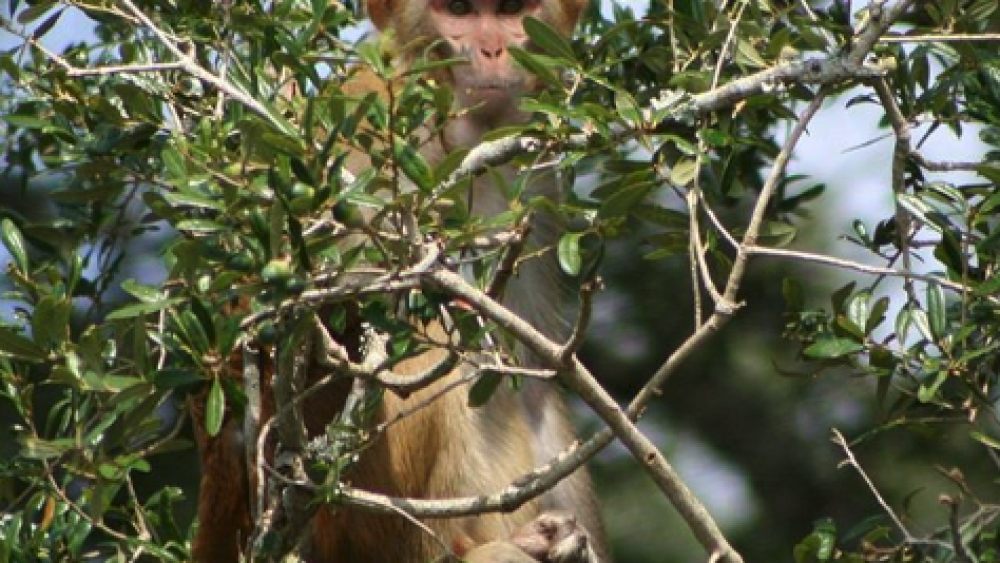The story of S.C.’s Monkey Island
Picture this: It was the summer of ‘79. Jimmy Carter was president; Margaret Thatcher had just become the first female Prime Minister of the U.K.; + Pink Floyd was getting ready to release,“The Wall.” Oh, and 1,400 rhesus monkeys were shipped to an island in South Carolina.

Monkey on Morgan Island | Image by @the.dreaming.lens
Those monkeys (or their descendants, rather) can still be found on Morgan Island, which sits off the coast of Beaufort. Today, the colony’s population has grown to nearly 4,000.
The primates enjoy a lifestyle, not unlike that of Charlestonians: their population is female-dominant (it’s 75% ladies on Morgan Island vs. 52% in Charleston), they can often be found on the beach (except when it’s too hot outside), + they’ve witnessed the property value of their home skyrocket in recent years (the island sold for a staggering $20.5 million in 2002– though we’re told the monkeys were not on the hook to pay for it).
Want to know more? Keep reading to take a walk on the wild side.
Getting down to monkey business
Why’d the monkeys come here in the first place?
The colony came from a primate research center in La Parguera, Puerto Rico, traveling 1,300 miles to Morgan Island, S.C.– where they were re-established as a free-range colony, and bred to fulfill the needs of biomedical researchers.
Before the monkeys relocated, various social groups existed within their colony. When they were shipped, those social groups were broken up. But get this: after arriving on the island, the monkeys proceeded to re-establish those same groups. In other words– even monkeys know how to keep in touch with their loved ones, so you have no excuse... Call your mom.
How can you visit Monkey Island?
Here’s the thing: the first rule of Monkey Island is that you can’t actually visit Monkey Island. This is an important rule to follow, for a few reasons:
- The monkeys prefer to enjoy a natural, undisrupted habitat
- Humans are gross– a.k.a. they may be carrying diseases that could potentially be transmitted to the monkeys
- Monkeys are wild animals– and although they may seem cute– they can pack a serious punch (and getting attacked by a monkey isn’t a cool scar story when said monkey weighs 15 lbs.)
- If that doesn’t sway you– those who get caught could be arrested for trespassing.
Says who?
Says the South Carolina Department of Natural Resources. The department owns + maintains Morgan Island. It was acquired as part of a collective effort to better protect natural resources along the ACE Basin, called the ACE Basin Project.
Morgan Island is about 4,000 acres in size. DNR leases 400 acres of that to Charles River Laboratories, Inc.– and that’s where the monkeys live.
While CRL takes care of the monkeys, the colony is actually owned by the National Institute of Allergy + Infectious Diseases (which is part of the National Institutes of Health). The monkeys used as part of research aimed at developing preventions + treatments for diseases affecting the public. None of that research takes place on the island, though.

Monkeys on Morgan Island | Photo by @mr_ryan_b
So… is there any way to see them?
Up close, maybe not. But, if you’re going bananas over the idea of seeing Monkey Island in person, you can always boat to the area.
According to Bluffton resident + self-proclaimed Monkey Island guru Matt Richardson, your best bet is to launch from the Eddings Point Boat Landing on St. Helena Island. It’s less than 5 miles away from Morgan Island + open to the public year round.
Pro tip: Consult a local tour guide or beforehand. They may be able to go with you to make sure your expedition goes off without a hitch.
//
Have you ever been close to Monkey Island? If so, I want to hear about your experience. Tell me about it in the comments below.
– Jen












